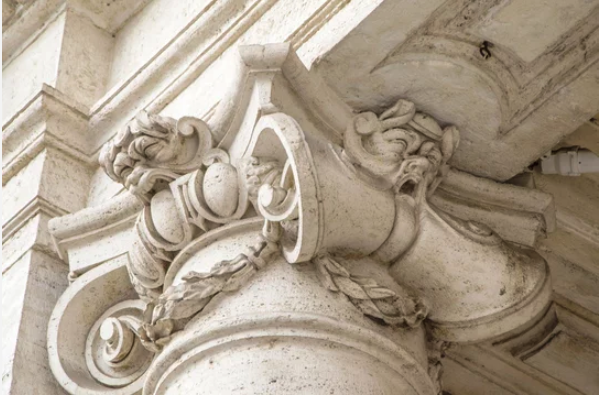This week in diplomatic and military history: April 13
Geetika Jerath | Apr 13, 2015
“I pledge allegiance to the Flag of the United States of America, and to the Republic for which it stands, one Nation under God, indivisible, with liberty and justice for all.”
The pledge of allegiance serves as a cornerstone of life in America. However, achieving “liberty and justice for all” necessitated countless events in the 18th century that were not so easy to overcome. Every great nation has an origin story and one of the most intriguing parts of evaluating our history is starting at the very beginning. In 1783, the colonists formally won their independence from the British; however, it is worth delving into the very first battles that initiated a revolution that would impact the future of the United States of America.
Tensions had been rising between the thirteen American colonies and Great Britain since 1764 due to events such as the Boston Massacre and the Boston Tea Party. In addition, the people were distraught due to multiple measures such as the Sugar Act, Stamp Act, and Townshend Act, which were created by the British to raise revenue from the colonies. The buildup of pressure and the aforementioned events led the British Parliament to declare that Massachusetts was in “open rebellion”. Soon after, on April 19, 1775, the American Revolutionary War began with the Battles of Lexington and Concord.
During the early hours of April 19, 1775, Thomas Gage, a British General who served as the commander of British forces in America and as the recently appointed Governor of Massachusetts, plotted to send British soldiers to Lexington and Concord. There were rumors that the Patriots were forming troops and harboring weapons to use against the British. The regiments of soldiers under General Gage were instructed to capture Samuel Adams and John Hancock in Lexington, and then were told to travel to Concord to take a hold of the weapons and gunpowder that the Patriots were collecting. Despite only informing the troops at the last minute, rebel sources in the British high command knew the plan and in turn, the legendary Paul Revere and a crew of horse riders traveled to alert the residents of the towns to prepare for the Redcoat troops. Even though Paul Revere is famously known for the phrase, “The British are coming!” this is a common misconception since this operation was very secretive and the Americans considered themselves British at the time. In the end, Revere successfully warned Adams and Hancock to flee but was captured by a British patrol.
The Lexington Green was the scene of the first battle at 5 a.m. on April 19th. Once the 700 British troops arrived, 77 armed Patriot minutemen, led by Captain John Parker, were waiting for them. After a British major ordered the Patriots to leave and disarm, they complied, having understood that they were largely outnumbered. In accounts by Redcoat and Patriot soldiers, each side blames the other for the first shot fired. It is still unknown to this very day but the “shot heard around the world” spurred what would become the American Revolution. Suddenly, everyone began to shoot and eventually, when order was restored, the Battle of Lexington was over. The casualties included 8 Americans with 10 wounded compared to one British soldier injured. There was no strategy involved during this battle and no planned approach since it was simply an exchange of fire between both sides.
After the skirmish in Lexington, the British Redcoats arrived two hours later in Concord in search of the Patriot weapons. Much to their surprise, hundreds of Patriot soldiers welcomed them, armed and ready to fight. Despite destroying the American military supplies that were housed in Concord, the British Lieutenant Colonel, Frances Smith, ordered the British troops to retreat and travel back to Boston without engaging the Patriot militiamen. It was unknown to the soldiers that the majority of the Patriot arms were relocated before the British arrived. On their way back to Boston, the British troops suffered attacks by Patriots including numerous casualties in Lexington upon their return. The casualty number went from one injured British soldier to almost 300 soldiers that were either M.I.A, injured, or killed. In comparison, the Patriots had fewer than 100 casualties on the battlefield.
The success of the Patriots in terms of the large number of British casualties can be attributed to their strategic military tactics during this second battle. There was no offensive line—a strategic ploy that was unexpected to the British soldiers. Instead, the Patriots used small squad and company tactics that involved flanking and shooting from behind trees and barriers to attack their enemies. These tactics worked in their favor. The British casualty count rose exponentially with less of an impact on the Patriot soldiers in comparison.
The Battles of Lexington and Concord were short but critical to starting the American Revolutionary War. It was in Concord where the British faced intense fire and defeat for the first time by Patriot soldiers. The sense of community among the rebels helped spread the news about the potential capture of Adams and Hancock and the raids on the weapons, which alerted the Patriots to prepare themselves. The military tactics that were executed at Concord proved to be useful thanks to the surrounding terrain, which gave the Patriots a major advantage. It is this success during these preliminary battles that encouraged the Patriots to keep fighting. What seemed to be a colonial uprising eventually turned into a war for independence between the Patriots and the Redcoats—a world war that would lead to the birth of the United States of America.
Bibliography
“Battles of Lexington and Concord.” History.com. A&E Television Networks, 2009. Web. 02 Mar. 2015.
“Battle of Lexington and Concord.” WPI: Battle of Lexington and Concord. Worcester Polytechnic Institute, n.d. Web. 20 Mar. 2015.
“Lexington and Concord.” Ushistory.org. Independence Hall Association, n.d. Web. 18 Mar. 2015.
“The American Revolution Begins.” History.com. A&E Television Networks, 2009. Web. 17 Mar. 2015.
“Two Contemporary Accounts of Lexington and Concord (1775).” Two Contemporary Accounts of Lexington and Concord (1775). Sam Houston State University, n.d. Web. 22 Mar. 2015.




